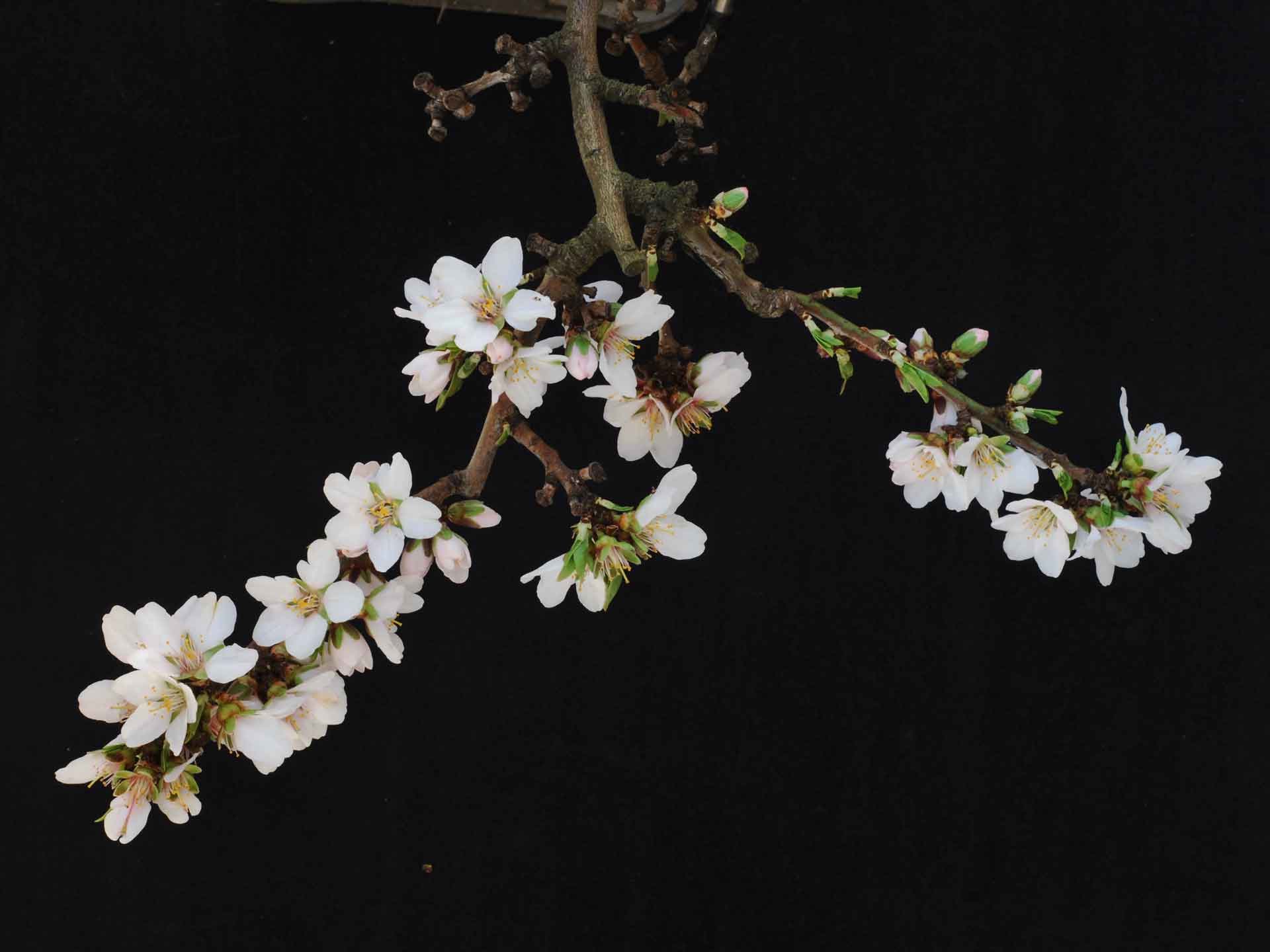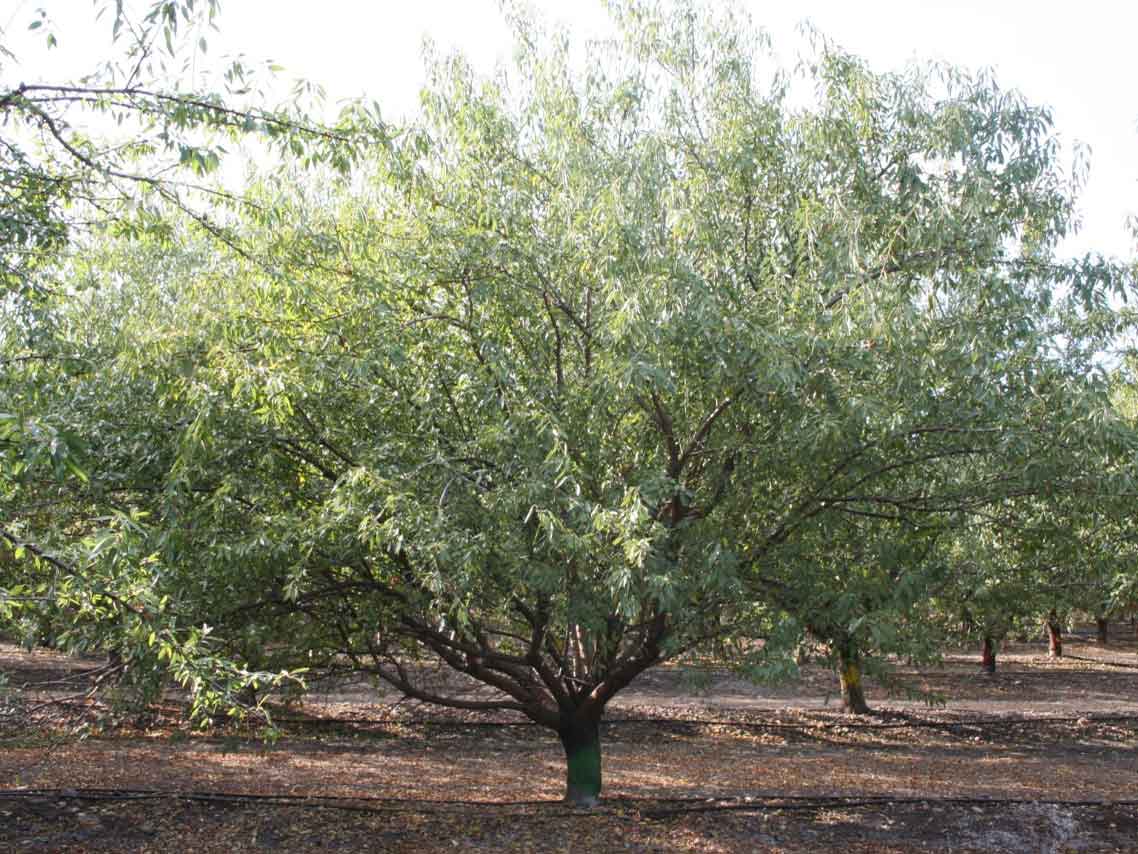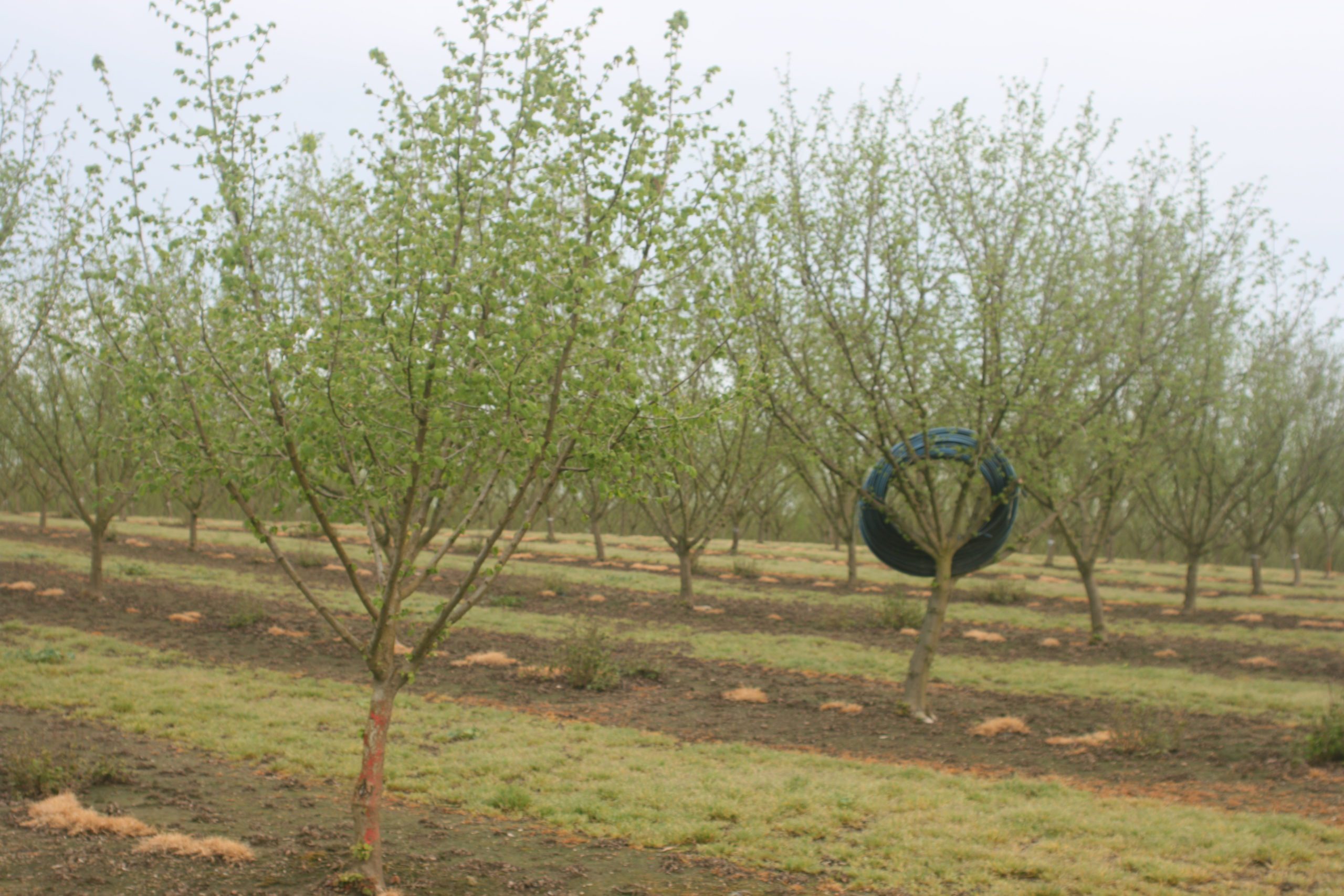When it comes to host susceptibility, almond and walnut trees were traditionally thought to be more susceptible to infections from Phytophthora species than pistachio trees. Over the past few years Phytophthora species like P. niederhauserii, P. mediterranea, and P. taxon walnut have posed an increasing threat to the pistachio industry with P. niederhauserii being the most widespread of the three species in pistachios. In almonds, P. niederhauserii and P. mediterranea are also an increasing threat, causing Phytophthora crown and root rot infections.
“The aggressiveness of these species in young and mature trees poses a rising threat in pistachio and almond orchards,” UC Davis plant pathology researcher Alejandro Hernandez Rosas said.
Phytophthora species are soil-inhabiting plant pathogens that thrive in wet conditions. There are many diseases caused by Phytophthora species based on the areas of the plant they infect.
The classic infections seen across all nut crops are root and crown rot infections. These are caused by several Phytophthora species. The crown rot phase of the disease is typically what is observed affecting tree nut crops.
Speaking at the annual UC Pistachio Day, Hernandez Rosas said P. niederhauserii, P. mediterranea, and P. taxon walnut are associated with crown and root rot of pistachio trees in California. These thermophilic species have higher optimum growth temperatures than other common Phytophthora species (P. syringae, P. citricola, P. cactorum, P. cinnamomi, etc.) affecting almonds and walnuts. Temperature growth tests of these isolates have shown species grow well at 90 degrees F, with some isolates being able to grow at nearly 100 degrees F. Warming temperatures in recent years may explain the recent rise of these species in pistachio and almond orchards.
Increased orchard plantings in the last 15 years, many times in marginal soils that create wet growing conditions, have also led to higher levels of Phytophthora infections in pistachios, Hernandez Rosas said.
Heavy soils, high-saline and saline-sodic soils contribute to infections as they slow water infiltration and root uptake, leading to the pooling of water around the trees. This pooling of water around the tree base provides the perfect environment for Phytophthora crown and root rot infections. Other factors like overirrigation and poor water management leading to trees sitting in saturated soils for long periods can also put trees at risk of infection by Phytophthora.
In general, following wet winters especially during El Niño years, there are higher rates of Phytophthora infections, Hernandez Rosas said. Recently, new crown and root rot infections caused by P. crassamura and P. nicotianae developed in pistachio orchards following the 2023-24 atmospheric storms, Hernandez Rosas said.
Inoculum Carried by Water
Source of the orchard irrigation water can contribute to higher levels of infection. Hernandez Rosas said surface water is known to carry Phytophthora inoculum, which can be introduced into the orchard.
Other factors that contribute to infection are irrigation drip lines being too close to tree trunks, increased soil compaction, atmospheric rivers and flooding.
In pistachio trees, cankers develop at the root crown and lower trunk, infected cambium turns dark and there is excessive gumming at the site of active cankers.
Hernandez Rosas said crown rot infections can grow rapidly, and when more than 40% to 50% of the tree trunk circumference has been affected, it is likely the tree will die at the onset of the first warmer days of summer. If the infection is caught early, fungicide treatment can slow the progress of the disease and prevent new infections from taking hold.
In orchards, infections are typically present in random areas, not in entire rows.
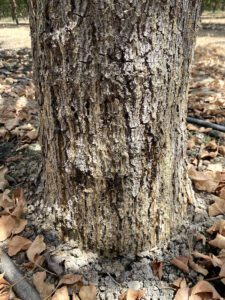
Rootstock Selection and Chemical Control
Rootstock selection can be a preventative measure. Platinum is the rootstock of choice for managing Phytophthora crown and root rot in California pistachios.
For chemical control of Phytophthora in pistachios, the fungicides potassium phosphite, mefenoxam, oxathiapiprolin, ethaboxam and fluopicolide were evaluated for their systemic properties and abilities to reduce Phytophthora root rot and inoculum levels in the soil. All products tested were systemic up into the root crown area and reduced root rot and Phytophthora propagule counts in the soil, Hernandez Rosas said.
Fungicides are best used as preventive measures. Mefenoxam, potassium phosphite and oxathiapiprolin are best used as soil applications in the spring and fall. Foliar applications of potassium phosphites can also be applied in the spring and fall. Two foliar applications of potassium phosphite at one-month intervals in the spring (mid-April and mid-May) are very effective for reducing Phytophthora infections in pistachios.
In the case of tree replants into soils with a history of Phytophthora, products like Orondis (oxathiapiprolin) may be used to reduce disease inoculum prior to planting trees. Hernandez Rosas said Orondis gives new trees a better chance to establish roots by killing Phytophthora propagules in the soil, thus preventing Phytophthora root rot infection around the time of planting.
Phytophthora in Almonds and Walnuts
In almonds, there can be infections of the aerial portions of the tree. These typically go by the names perennial or aerial Phytophthora cankers, often caused by P. citricola and P. cactorum. These infections take place following an accumulation of contaminated soil and water in pockets formed at the scaffold crotch area. Thus, scaffold selection should be made to avoid pocket formation at the junction of main scaffold branches where water and debris can collect. Aerial Phytophthora can be difficult to detect until the above-ground parts of the tree show symptoms, including profuse gumming and branch dieback. Affected trees may have decreased yield and vigor for a few years before dying.
Another aerial disease is called Phytophthora pruning wound cankers (caused by P. syringae). Disease outbreaks by this pathogen occurred throughout California in 2023 following atmospheric rivers. The disease developed at pruning wounds and was also capable of directly infecting unwounded twigs.
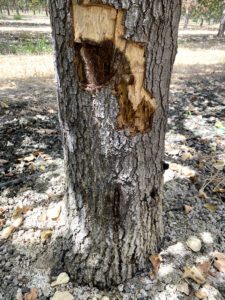
Correct Diagnosis
Hernandez Rosas stressed that correct diagnosis is important. Aerial Phytophthora symptoms can look like other disease symptoms caused by fungal diseases (e.g., Ceratocystis canker) or abiotic stresses (e.g., boron toxicity). Bark and cambium tissue can be submitted to a diagnostic lab for testing. Soil samples taken starting 2 inches below the soil surface can be used to detect the presence of Phytophthora, but not always the species present. Soil samples are best taken after irrigating trees or a rain event when the soil is wet.
When establishing a new almond orchard, choosing resistant rootstocks is a preventative measure. Plum hybrids are known to be more resistant to Phytophthora infections than peach and almond hybrids. Avoiding soil contact with the graft union at planting is also recommended.
Walnut trees declining from Phytophthora root and crown rot can be misdiagnosed as suffering from root asphyxiation or confused with paradox canker disease. In walnuts, paradox hybrid rootstocks are more tolerant to several Phytophthora species than Northern California black walnut or English walnut rootstocks.
Prevention of Phytophthora diseases involves a multipronged approach with cultural practices focused on water management and chemical treatments applied as chemigants or foliar applications. Hernandez Rosas said concurrent work with Dr. Jim Adaskaveg’s lab at UC Riverside is being done to register new products and develop rotational fungicide programs to reduce the possibility of fungicide resistance.









